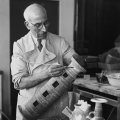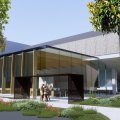The University of Queensland’s Property and Facilities Division (P&F) will conduct Post-Occupancy Evaluations (POE's) on all large construction and rehabilitation projects in order to achieve good design and function of its buildings.
The POE’s will be sent out to key internal stakeholders as buildings come out of the defects liability period, which is usually 12 months after construction is complete.
The evaluations will consider how well the building or a specific space within the building performs for those who occupy it in terms of health, safety, security, functionality and comfort.
The POE is customised for each project, with invitations sent via email for participation in the online survey. While the individual data collected remains confidential, the P&F Project Manager will still meet key building users to discuss the survey outcome and any outstanding issues.
The benefits of a post-occupancy evaluation are:
• Identifies key performance criteria for specific aspects of the building;
• Ensures efficient use of the building; and
• Improves UQ Design Standards and Guidelines.
The University in the last 10 years has undergone an enormous building program.
The University has had an increase of 256,750m2 of new space constructed since 2001, not including the Advanced Engineering Building, Translational Research Institute, Centre for Advanced Imaging, Global Change Institute and Oral Health Centre, which are an additional 86,603 m2.
The projects recently evaluated are:
• Parnell Level 3 Refurbishment
• Molecular Bio Sciences Level 5 North Refurbishment
• Gatton Vet Teaching Labs and Animal Studies GeLL Rehabilitation
• Gatton Vet Science Building, Vet Medical Centre and Clinical Studies Centre Construction
P&F appreciates all the feedback it has received so far.
This feedback is an integral part of the evaluation process and is vital to future building and process improvements.
.jpg)












